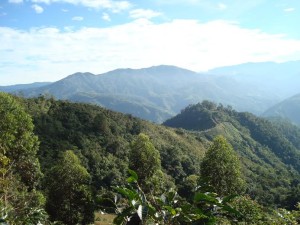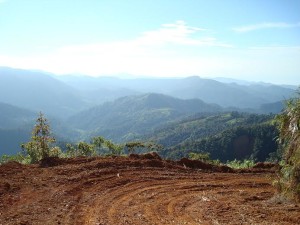The following is a guest post by Mike Long, Operation Manager for Gondwana Ecotours. Please see the end of this post for a brief bio.
When one considers the drink of choice from Costa Rica, coffee is the obvious choice. High-altitude conditions are perfect for cultivation of this electrifying bean, and Costa Rica produces arguably some of the best in the world. But Costa Rica is preparing to move beyond the bean and make a foray into the new frontier of wine making.
Napa Valley consultant Kerry Damskey is pioneering Costa Rica’s first winery in the small town of Copey, near the center of the country, south of San Jose. Copey is, coincidentally, right next to Tarrazu, the region known for producing some of the best coffee in Costa Rica. With high hopes, but no real wine industry to compare it to in Costa Rica, the citizens are waiting for the inaugural batch. The vineyard shows promise due to the similar conditions present in Sonoma and Napa Valley: a similar annual rainfall and soil environment are good indications, but the nearly 2000m elevation will present challenges for the vineyard.
As altitude increases, the air is cooler, which can be advantageous for cultivating grapes. The higher the elevation, the cooler the climate, and the higher the acidity of the grape. Up to a certain point, the higher
altitude can mean a longer growing season and a longer hang time for the grapes. The danger in high-elevation cultivation is that though the grapes have more time to allow the flavors to develop, there is a chance they will not ripen. Under this consideration, amarone-style desiccated reds are being produced in Costa Rica’s new upstart, as they are more likely to ripen in the cooler conditions. In addition, mountainous regions can pose troubles for grapevines if they aren’t getting full sunlight.
Nearby mountains can be influencers on the meteorological effect called the “lapse rate”, which affects the temperature at night. Basically, in the evening, if there are higher peaks above a vineyard, the cooler air can flow down the mountainside to cool the grapes at night, which is critical for their development. Also, having the grapes grow at high-altitude is just so inconvenient because you have to walk up the whole mountain any time you want some grapes. What a chore!
Some of the acidity that might be borne out of higher growing location can be offset, however. At very high altitudes, the air is thinner and cleaner which makes for a higher level of UV rays. While the ramifications of this are not fully understood, some research indicates that the amount of Ultraviolet radiation does effect the nature of the grape, in terms of its development and overall taste and aroma. Also, the thermal disparity between the warm days and cool nights often lends a hand to the uniform and balanced development of sugars, polyphenols, color, acids, and flavors.
While not the highest of the high vineyards, (that dubious honor belongs in a few vineyards in Nepal and Bhutan, I believe, at over 2,700 m) there are certainly challenges presented by these vertical circumstances. Even beyond sunlight and climatological considerations, the soil content is largely affected by elevation. Mountainous and hilly topographically tend to result in more heterogeneous, diverse soil makeup. While not necessarily a challenge, per se, the soil content is a factor that ultimately shapes what the wine will taste like in the end.
With a background in growing in mountainous, tropical locations, Damskey says, “Costa Rica has a large international presence and subsequently a niche market for domestic premium wines. If the project is successful, we are looking to produce 15,000 cases a year.”
As one of the world-leaders in environmental preservation and a thriving ecotourism sector that hinges upon the protection of their forest and lands, it is unlikely that, even if successful, Costa Rica’s wine industry will expand to compete on the world stage. However, while not the first winery in Costa Rica, (Vicosa Vineyards produces small batches of wine) there are high hopes for this new burgeoning location. Currently, Chilean and Argentinian wines saturate the Costa Rican market. With the first vintage slated to be released in 2015, Costa Ricans and expats who currently flock there will surely be holding their breath in anticipation of something special.
Mike Long is an avid, traveler, horticulturalist, and lover of fine food and drink. He works for Ecotourism company Gondwana Ecotours doing blogging, research, and operations management. You may visit his blog here.


